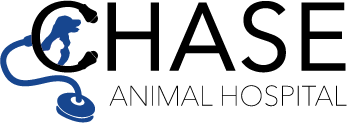In recent years, concerns have been expressed by some pet owners regarding the potential for contamination of pet foods that contain grain products with naturally-occurring mycotoxins . Mycotoxins are metabolic by-products of fungi that are toxic to both animals and man. These concerns are based to some extent on current data which has shown that mycotoxins are toxic to farm and laboratory test animals. Food contamination may be more relevant in pets since they are maintained and fed for longer periods of time than farm animals and thereby are theoretically more vulnerable to chronic exposure to toxicants.
It is generally recognized by pet food manufacturers that mycotoxin contamination is a source of increased problems in their industry. Ingredients that are at risk of becoming contaminated are wheat and wheat products , corn and corn products, soybean meal and hulls, barley and oats.
Mycotoxins can develop prior to harvest where their concentration depends on weather and natural conditions, including moisture, temperature, pH and stresses such as drought and associated growth of other fungi and microbes. Grains and feeds can also be contaminated with mycotoxins between harvesting and drying, as well as during storage. Once produced, these toxins cannot be readily extracted from contaminated feed.
The major mycotoxins with potential for contamination of pet foods are aflatoxins,vomitoxin, zearalenone, fumonisins, and ochratoxin A. Three genera of fungi, Aspergillus, Penicillium, and Fusarium (Gibberella), are the most frequently implicated causes of mycotoxin contamination.
Aflatoxins are one of the most potent naturally-occurring carcinogens known to man and have been associated with a variety of health problems in both animals and man. All species appear to be susceptible to this toxin, although susceptibility varies from species to species. The primary target organ for aflatoxins is the liver with liver disease resulting from dogs ingesting aflatoxin-contaminated dog food.
Vomitoxin, known chemically as deoxynivalenol (DON), affects weight gain and appetite in pigs, with 10 ppm resulting in loss of appetite, vomiting and weight loss. It is also known to adversely affect the immune system, although at what levels this would start to occur remains unknown. Little is known about its toxicity in pets. It is known that dogs are susceptible to relatively low levels of vomitoxin and exhibit health problems similar to that seen in swine. Cats, as well as cattle, poultry, and humans, can also be affected.
Zearalenone has been reported to cause clinical signs in poultry, swine and man, but not in dogs or cats. Zearalenone has a chemical structure similar to that of estrogen and causes hyperestrogenism in both laboratory animals and agricultural livestock. Its effects are mainly on the reproductive system. In pigs, it can cause serious reproductive problems, including failure to show heats and reduced sex drive in boars. It can also affect fetal development and the viability of neonates. The intensity of symptoms is dependent on the amount of toxin consumed.
Fumonisins interfere with cell membrane metabolism and the signs of toxicity vary with species. The only studies conducted to demonstrate the effects of fuminosins in pet species has been in rabbits. Ochratoxin A is a nephrotoxin (i.e. toxic to the kidneys) and is also teratogenic (i.e. causes fetal malformation during the first three months of pregnancy) in all species tested. It also impairs the immune system and is a suspected carcinogen.
In order to deal with the potential occurrence of mycotoxins in pet foods, pet food manufacturers currently employ mycotoxin testing programs. These programs include the screening of incoming ingredients prior to their utilization in the formulation of pet foods, both by suppliers and manufacturers. As well, manufacturers perform periodic analysis of pet food products for mycotoxins.
Whether the concern for the presence of mycotoxins in pet foods is a valid one remains under discussion. Since relatively little information exists regarding the toxicological effects of mycotoxins on dogs and cats, further studies are indicated to determine both the identity and sources of mycotoxins that could contaminate pet foods, as well as the effects of mycotoxins on pets. In the meantime, pet food manufacturers must continue to ensure that their mycotoxin management programs are stringently maintained.


